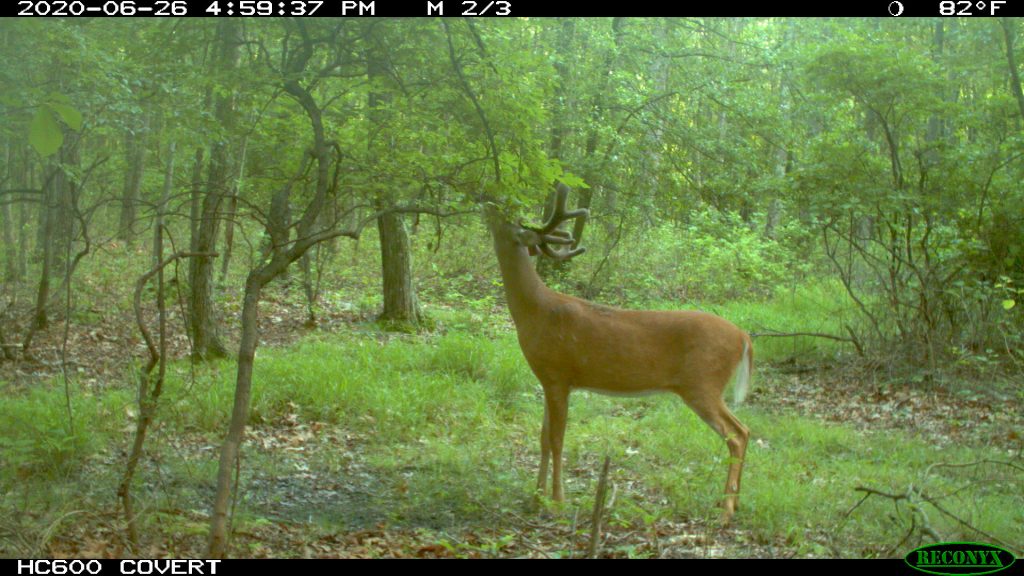Licking stuff has always been gross. And that was pre-COVID19. It’s bad enough to lick the frosting off a cupcake and put it back but licking things like doorknobs and phones are completely out of the question.
Most mammals and 2-year-olds don’t share this philosophy on licking. For deer, licking plays an important role in behavior. Before breeding, a buck will lick the urogenital area of a doe. After birth, a doe will lick her newborn fawns from head to toe. Does also lick perineal area of her fawn to stimulate defecation while nursing. And she’ll groom her fawns long after there is a need to do so. Kind of like your mother wiping your face when you are 11 years old.
In some instances, licking serves a physical purpose – removing fawn poop or ectoparasites. But mostly, licking is a form of communication – strengthening bonds and transmitting information.
For all the attention that gets paid to them, bucks don’t contribute much in the way of deer society. Their services are only needed a couple months of the year. No giving birth. No lactating. No need for grooming or bonding. They just hang out, grow antlers, and wait for those 2 months. That’s a lot of time to do nothing. Hanging out with your homies gets dull after a while. What’s a buck to do all summer long?
I present to you the licking branch.
It’s like the corner bar. Bucks come and go. Stopping for a sniff and a lick. Licking branches are used by bucks year-round and are the main scene in spring and summer. Bucks need to protect their most prized possession so rubbing anything with their sensitive growing antlers is out of the question. But spitting on a branch is A-OK.
Nobody knows how a licking branch is chosen. They are often associated with scrapes but don’t have to be. They are usually located over a trail or along the edge of a field – think high traffic areas. And they have to be the right height – just slightly above his head. Marking involves mouthing the branch. This apparently allows him to leave his own mark while smelling and tasting the ones already there. Crazy!
Like many things in the deer and natural world, what information is being exchanged and why they are used throughout the year is a mystery. It has been suggested that it communicates identity and status and may facilitate social bonding. Nothing like a few bros bonding over a branch. That bar analogy holds up.
There is a reason I don’t go around licking branches or anything else for that matter. It’s called disease. Viruses, bacteria, and other nasties deposited by others can hang out there and wait. Prions, like CWD, are on that list of nasties. In fact, licking branches were rated the highest risk for prion contact related to scraping behavior. Note this is not the only way for a deer to come in contact with CWD prions.
But the licking branch will soon take a back seat. Those sensitive antlers are slowly dying. That’s right. Antler growth is over and calcification has started. Soon bucks will be able to use their new head gear. Their 2 months of fame will be here before you know it. Until then, they’ll keep licking stuff just like that 2-year-old.
-Jeannine Fleegle
Wildlife Biologist
PGC Deer and Elk Section
